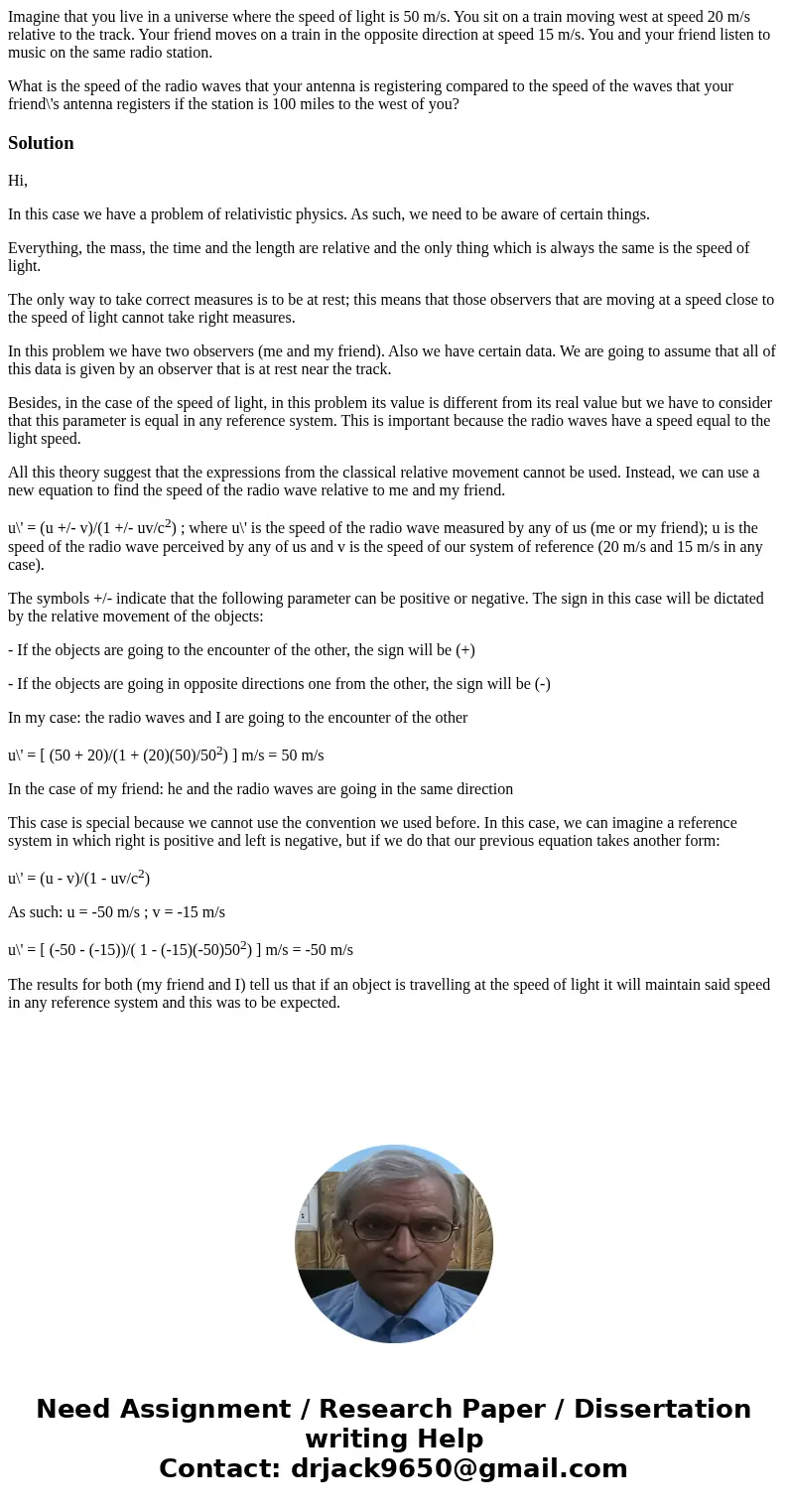Imagine that you live in a universe where the speed of light
Imagine that you live in a universe where the speed of light is 50 m/s. You sit on a train moving west at speed 20 m/s relative to the track. Your friend moves on a train in the opposite direction at speed 15 m/s. You and your friend listen to music on the same radio station.
What is the speed of the radio waves that your antenna is registering compared to the speed of the waves that your friend\'s antenna registers if the station is 100 miles to the west of you?
Solution
Hi,
In this case we have a problem of relativistic physics. As such, we need to be aware of certain things.
Everything, the mass, the time and the length are relative and the only thing which is always the same is the speed of light.
The only way to take correct measures is to be at rest; this means that those observers that are moving at a speed close to the speed of light cannot take right measures.
In this problem we have two observers (me and my friend). Also we have certain data. We are going to assume that all of this data is given by an observer that is at rest near the track.
Besides, in the case of the speed of light, in this problem its value is different from its real value but we have to consider that this parameter is equal in any reference system. This is important because the radio waves have a speed equal to the light speed.
All this theory suggest that the expressions from the classical relative movement cannot be used. Instead, we can use a new equation to find the speed of the radio wave relative to me and my friend.
u\' = (u +/- v)/(1 +/- uv/c2) ; where u\' is the speed of the radio wave measured by any of us (me or my friend); u is the speed of the radio wave perceived by any of us and v is the speed of our system of reference (20 m/s and 15 m/s in any case).
The symbols +/- indicate that the following parameter can be positive or negative. The sign in this case will be dictated by the relative movement of the objects:
- If the objects are going to the encounter of the other, the sign will be (+)
- If the objects are going in opposite directions one from the other, the sign will be (-)
In my case: the radio waves and I are going to the encounter of the other
u\' = [ (50 + 20)/(1 + (20)(50)/502) ] m/s = 50 m/s
In the case of my friend: he and the radio waves are going in the same direction
This case is special because we cannot use the convention we used before. In this case, we can imagine a reference system in which right is positive and left is negative, but if we do that our previous equation takes another form:
u\' = (u - v)/(1 - uv/c2)
As such: u = -50 m/s ; v = -15 m/s
u\' = [ (-50 - (-15))/( 1 - (-15)(-50)502) ] m/s = -50 m/s
The results for both (my friend and I) tell us that if an object is travelling at the speed of light it will maintain said speed in any reference system and this was to be expected.

 Homework Sourse
Homework Sourse